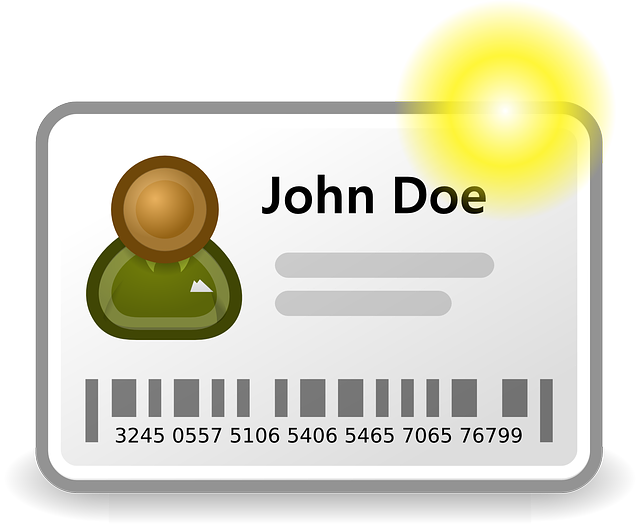The article discusses the importance of a Vehicle Identification Number (VIN), a 17-character code that provides comprehensive information about a vehicle's make, model, year, and unique manufacturing details. It is crucial for consumers, especially in regions like Australia and the U.S., to decode the VIN to ensure compliance with local safety and environmental regulations. A VIN decoder can access detailed vehicle history records, including past accidents, service records, and recall information, which are vital when purchasing a used car or importing one into these countries. The VIN verifies if the vehicle has any outstanding safety recalls and offers insights into its safety features, performance, and accident history. Online VIN decoding services offer this information at no cost, empowering consumers with critical data to make informed decisions about their car purchases or imports, thus ensuring that vehicles meet all necessary safety standards before they can be legally operated on local roads.
Disentangling the complexities of a VIN (Vehicle Identification Number) can seem as daunting as tackling a Rubik’s Cube, yet it holds a wealth of information critical to vehicle history and safety. This article demystifies the VIN decoding process for imported cars, guiding you through Australia and U.S. standards with ease. Whether you’re a buyer or an enthusiast, understanding how to interpret a VIN number is invaluable. From uncovering accident histories to identifying if a vehicle has been subject to safety recalls, the right tools make VIN analysis accessible and informative. Dive into the intricacies of VIN decoding and unlock the story each 17-character sequence tells about the automobile’s past and compliance with local regulations.
- Unraveling the Mystery of VIN: A Step-by-Step Guide
- The Anatomy of a VIN: Breaking Down Each Character
- VIN Decoding for Imported Cars: Navigating Australia and US Standards
- Tools for VIN Analysis: Free Resources at Your Fingertips
- What Your VIN Reveals: History, Recalls, and Safety Information
Unraveling the Mystery of VIN: A Step-by-Step Guide

Decoding a Vehicle Identification Number (VIN) may seem like an enigma, akin to solving a Rubik’s Cube, but with the right knowledge and resources, it’s a process that can be broken down into manageable steps. The VIN is a unique identifier composed of 17 characters, each holding critical information about the vehicle’s history, specifications, and compliance with safety standards. To begin, the first character denotes the country or region where the car was manufactured, which is particularly relevant for imported vehicles. This is followed by the make, model, and the vehicle descriptor, which outlines the type of vehicle—such as a sedan, SUV, or pickup truck.
Subsequent characters in the VIN indicate the engine type, size, and other powertrain details, including whether it’s electric or hybrid. The ninth character is crucial as it represents the vehicle’s trim level, which can affect safety features, performance, and other key attributes. From the tenth character onwards, data encodes information about the manufacturing plant, the production line, the year of manufacture, and the sequential production number. This level of detail ensures that each VIN tells a comprehensive story of the vehicle’s origin, specifications, and history. For buyers in Australia or the U.S., especially when dealing with imported cars, VIN decoding is an indispensable tool for verifying the car’s compliance with local safety and environmental regulations. Utilizing free online VIN decoders, one can access a wealth of information, including the vehicle’s accident history, service records, and whether it has been involved in any recalls—all of which are essential for informed purchasing decisions.
The Anatomy of a VIN: Breaking Down Each Character

The Vehicle Identification Number, or VIN, is a unique code that encapsulates the history and specifications of a vehicle. This 17-character string is not arbitrary; each character serves as a critical piece of information about the car’s origins, features, and history. The VIN begins with a letter or number indicating the country or region where the vehicle was manufactured, followed by a few characters that represent the specific make, model, and type. This is then followed by a section where the descriptor characters convey details about the vehicle’s body style, engine type, and restraint systems. The ninth to thirteenth characters are known as the VIN’s ‘heart,’ where you’ll find the vehicle identification number plant code, assembly plant code, model year, and serial number of the car as it rolled off the production line. The fourteenth and seventeenth characters tell you the model and safety recall information, while the fifteenth character is a check digit used to verify the integrity of the VIN. The sixteenth character can indicate the type of vehicle, such as a passenger car, motorcycle, or heavy truck. Decoding this sequence requires expertise in interpreting the industry standards and regulations that govern VINs. With access to databases and decoding tools, one can unearth a wealth of information, from the car’s build specifications to its accident history and compliance with local safety regulations. This process is invaluable for buyers, especially those importing vehicles into countries like Australia or the U.S., where the vehicle must meet certain standards before it can be legally driven on local roads.
VIN Decoding for Imported Cars: Navigating Australia and US Standards

When importing a car into Australia or the U.S., decoding the Vehicle Identification Number (VIN) becomes an essential step to ensure compliance with local standards and regulations. The VIN, a unique 17-character code, encapsulates critical information about the vehicle’s origin, manufacturing details, specifications, and safety features. For buyers in these countries, VIN decoding is not just a matter of curiosity; it’s a prudent measure to assess the car’s compatibility with regional standards, its history, and any potential issues that could affect safety or legality on local roads.
In Australia and the U.S., vehicle imports must align with stringent safety and environmental regulations. The VIN decoding process allows importers to verify if the vehicle has been recalled for safety reasons, its odometer readings, and whether it has a history of accidents or damage. This information is crucial in determining the car’s value and reliability. Moreover, VIN decoding ensures that the vehicle meets the necessary Australian Design Rules (ADRs) or U.S. Federal Motor Vehicle Safety Standards (FMVSS). Tools and services offering free VIN decoding cater to this need by providing detailed reports that interpret the VIN data, making it accessible for buyers to make informed decisions about their imported vehicles.
Tools for VIN Analysis: Free Resources at Your Fingertips

Decoding a Vehicle Identification Number (VIN) can seem daunting, but with the right tools, it’s a straightforward process that provides a wealth of information about a vehicle’s history and specifications. For those in Australia or the U.S., especially when dealing with imported cars, understanding the VIN is crucial for compliance with local regulations and for ensuring the safety and reliability of the vehicle. Thankfully, there are numerous free resources available online that enable car buyers and enthusiasts to decode a VIN with ease. These resources break down the 17-character string into its constituent parts, revealing details such as the manufacturer, model, year, and unique identifier for the specific vehicle. One of the most user-friendly platforms is the National Highway Traffic Safety Administration (NHTSA) database in the U.S., which provides VIN decoding services along with recall information. In Australia, similar services are offered by the Australian Competition and Consumer Commission (ACCC), among others. These databases can be accessed directly or through third-party websites that have integrated these services to provide a more streamlined user experience. By entering a VIN into one of these platforms, users can quickly ascertain if the vehicle has been involved in past accidents, has had any safety recalls, and whether it meets the safety standards of its new country of operation. These tools are not only free but also invaluable for anyone looking to purchase a used car or verify the authenticity of a newly imported one. They empower consumers with the knowledge they need to make informed decisions about their vehicle purchases.
What Your VIN Reveals: History, Recalls, and Safety Information

Decoding a Vehicle Identification Number, or VIN, is akin to unlocking a vehicle’s history book. This unique identifier contains a wealth of information about the car’s origin, manufacturing details, and specifications. It starts with a World Manufacturer Identifier (WMI) that pinpoints the country of origin and the manufacturer. Following this, the VIN discloses the vehicle’s description, such as its type, body style, and engine configuration. A critical aspect of the VIN is its ability to reveal any history of recalls. Manufacturers issue recalls for various reasons, including safety defects or failures that could potentially affect the car’s operation. By entering a VIN into a decoding service, consumers can quickly ascertain whether the vehicle has been subject to any such recalls, ensuring they are making an informed decision when purchasing a used car. Moreover, safety information is also accessible through the VIN. This includes data on airbag deployment, seat belt functionality, and other critical components that have been recalled or replaced due to safety concerns. Such information is invaluable for buyers looking to ensure the vehicle meets their safety standards and has not been compromised in its past usage. With the advent of user-friendly VIN decoding platforms, the process of uncovering this vital information is streamlined and accessible to anyone, making it an indispensable tool for car buyers, sellers, and enthusiasts alike.
Deciphering a Vehicle Identification Number may initially resemble the challenge of solving a Rubik’s Cube, but with the guidance provided in this article, it becomes an accessible puzzle for anyone interested in understanding a vehicle’s history and compliance. Our step-by-step guide demystifies the VIN structure, while the detailed breakdown of each character equips readers to navigate both Australian and U.S. standards when dealing with imported cars. The array of free resources available for VIN analysis ensures that potential buyers can make informed decisions with confidence. In conclusion, the insights gleaned from a VIN are invaluable, offering a comprehensive view of a vehicle’s past, its features, and any pertinent safety information. Understanding your VIN is not just about compliance; it’s about safety, history, and informed choice—a critical aspect of vehicle ownership in an increasingly global marketplace.



